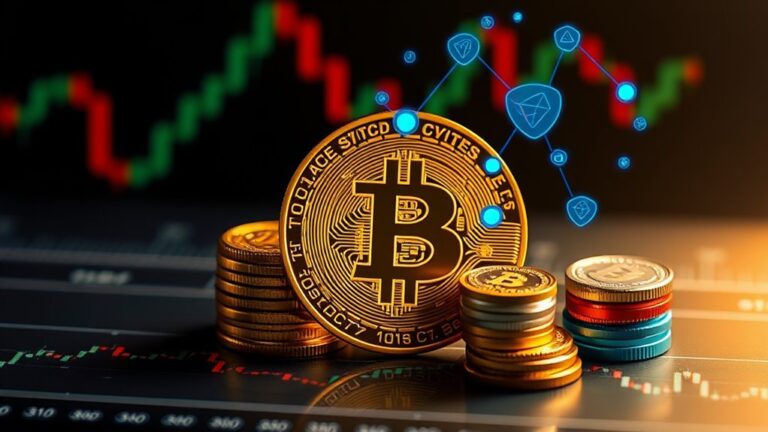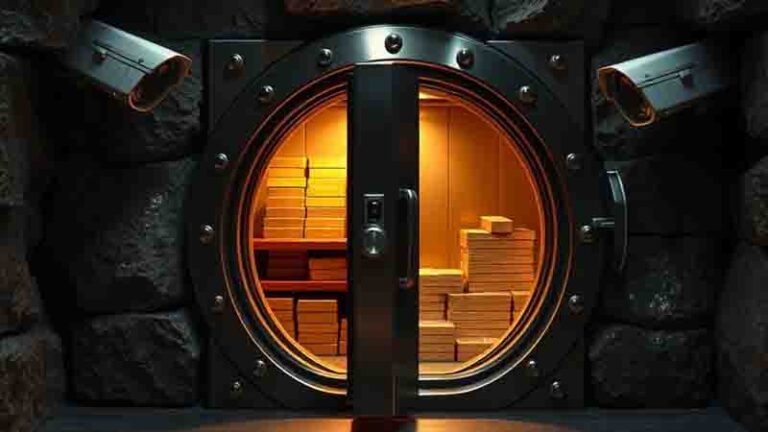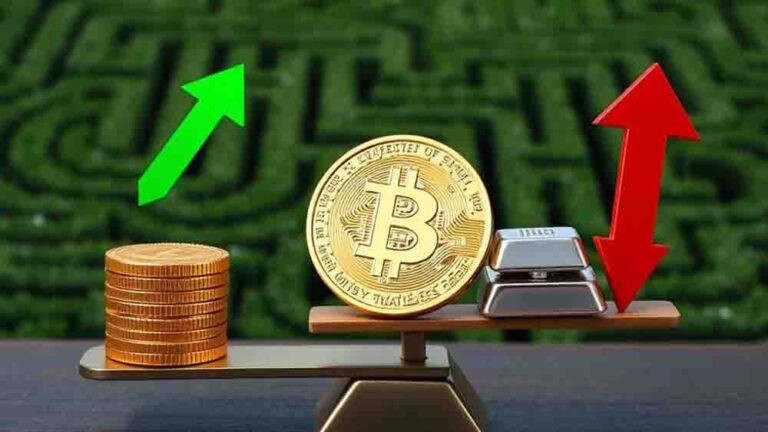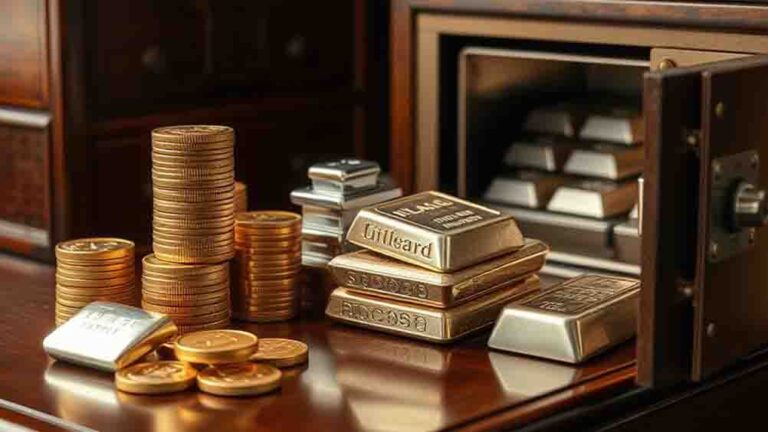3 Best Investment Strategies: Balancing Precious Metals and Cryptocurrencies
Note: This post may contain affiliate links, and we may earn a commission (with No additional cost for you) if you purchase via our link. See our disclosure for more info. The gold and crypto world is constantly changing. This is not financial, investment, legal, or professional advice. So, please verify the information on the gold and cryptocurrency provider’s websites.
Click below and listen to the podcast on this page.
You've heard of the potential of precious metals and cryptocurrencies. But, how do you balance these two asset classes in your investment strategies portfolio? While both offer unique benefits, they also come with their own set of risks and challenges. Explore three key strategies: diversification, risk-adjusted allocation, and market timing. They will help you maximize returns and minimize losses. As you navigate the complex world of metals and digital currencies, you'll discover how these strategies can help you build a resilient portfolio that stands the test of time. But before you plunge into it, there's more you need to know…
Key Takeaways
- Diversify across asset classes, including stocks, bonds, precious metals, and cryptocurrencies to mitigate risk.
- Allocate 5-10% to precious metals as a hedge against inflation and economic uncertainty.
- Adjust cryptocurrency allocation based on individual risk tolerance, with higher percentages for risk-tolerant investors.
- Implement regular portfolio rebalancing, ideally quarterly or annually, to maintain desired asset allocation.
- Utilize a mixed strategy of physical metals, ETFs, mining stocks, and cryptocurrencies for balanced exposure.
Diversification Across Asset Classes
Many savvy investors recognize that diversification across asset classes is a cornerstone of smart investing. By spreading your investments across different types of assets, you can effectively mitigate risk and reduce your exposure to market volatility.
A well-balanced investment portfolio should include a mix of traditional assets like stocks and bonds, as well as alternative investments such as precious metals and cryptocurrencies.
Precious metals, including gold and silver, have long been considered safe-haven assets. They typically show low correlation with stocks and bonds, making them an excellent addition to your portfolio. Experts recommend allocating 5-10% of your investment portfolio to precious metals for enhanced stability during economic uncertainty.
Cryptocurrencies, like Bitcoin and Ethereum, have emerged as another alternative store of value. Including these digital assets alongside precious metals can provide additional growth potential to your portfolio.
To maximize the benefits of diversification, consider a mixed strategy that includes:
- Physical metals
- Precious metal ETFs
- Mining stocks
- Cryptocurrencies
Regular rebalancing of your diversified portfolio is essential to maintain your desired asset allocation and risk levels. This process helps you adapt to market fluctuations and keeps your investment strategy aligned with your financial goals.
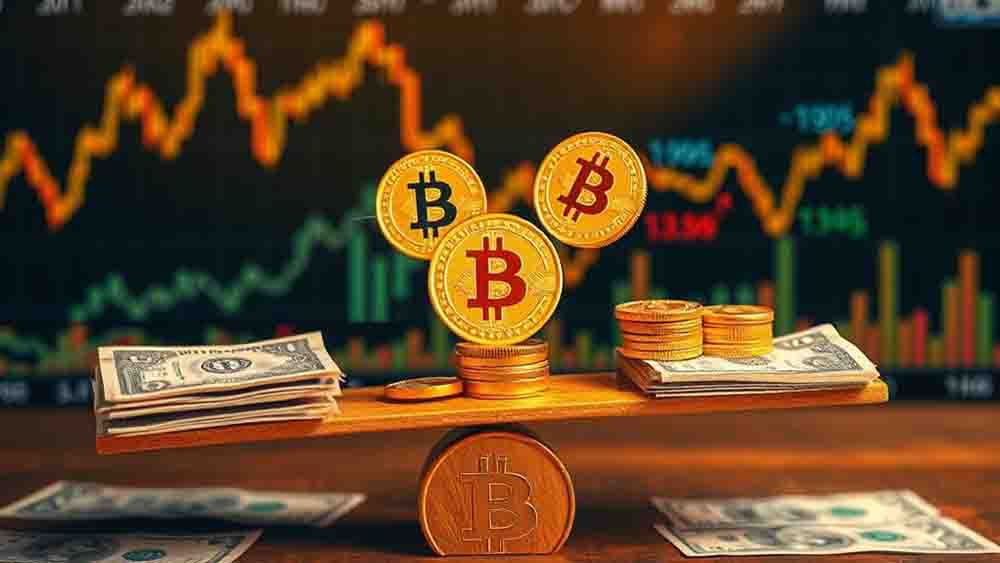
Risk-Adjusted Portfolio Allocation
When considering a risk-adjusted portfolio allocation, it's vital to strike a balance between potential returns and risk exposure. Your investment strategies should account for market volatility and your personal risk profile.
A well-balanced portfolio typically includes a mix of assets, with 5-10% allocated to precious metals as a hedge against inflation and currency devaluation.
Incorporating both precious metals and cryptocurrencies in your portfolio can help reduce overall volatility. Precious metals often have a low correlation with stocks and cryptocurrencies, providing stability during market downturns.
However, your specific allocation should depend on your risk tolerance and investment goals.
- Conservative investors may prefer a higher allocation to precious metals
- Risk-tolerant investors might lean towards a larger percentage in cryptocurrencies
Regular portfolio rebalancing is important to maintain your desired asset allocation and manage risk exposure. As financial markets fluctuate, you'll need to adjust your holdings to align with your investment strategy.
This process helps guarantee that your portfolio remains balanced and reflects your current risk profile and market conditions.
Consider your investment experience and conduct thorough research before making allocation decisions.
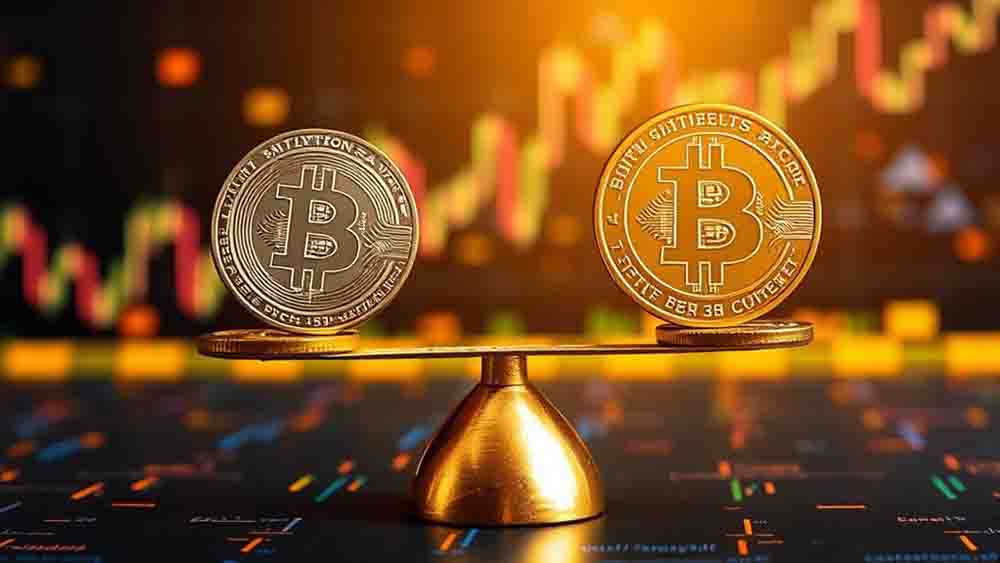
Market Timing and Rebalancing
Investors often grapple with the allure of market timing and the necessity of rebalancing. While market timing can greatly impact returns, studies show that missing just a few of the best trading days can lead to substantial losses over time.
Instead, focusing on regular rebalancing can help maintain your desired asset allocation and reduce risk exposure.
When balancing precious metals and cryptocurrencies in your portfolio, consider these key points:
- Ideal allocation: Aim for a 5-10% allocation to precious metals and tailor your cryptocurrency exposure based on your risk tolerance and market conditions.
- Diversification benefits: Both asset classes can enhance portfolio diversification, with precious metals showing low correlation to traditional assets and cryptocurrencies offering exposure to emerging market dynamics.
- Regular assessment: Continuously evaluate market conditions and performance metrics to verify your investment strategy aligns with your financial goals.
Rebalancing, typically recommended quarterly or annually, involves selling overperforming assets and buying underperforming ones. This approach helps maintain your desired asset mix and manages risk in volatile markets.
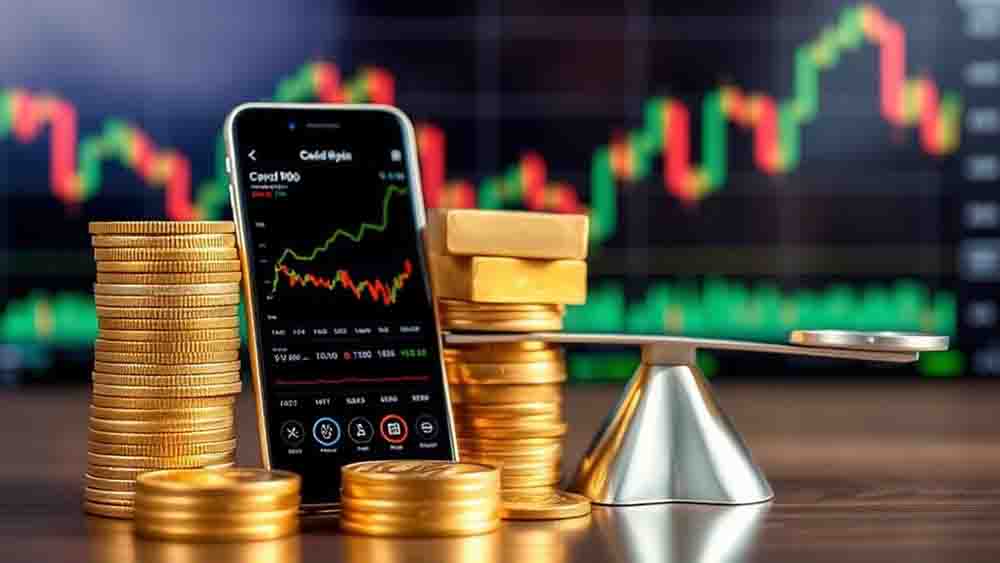
Frequently Asked Questions
How Do Geopolitical Events Impact Precious Metals Versus Cryptocurrency Investments?
Geopolitical events impact precious metals and cryptocurrencies differently.
You'll find that precious metals, especially gold, often serve as safe-haven assets during times of political uncertainty. They tend to rise in value when global tensions increase.
Cryptocurrencies, however, can be more volatile. While some view them as digital gold, their reactions to geopolitical events are less predictable.
Cryptocurrencies may benefit from increased demand in countries facing economic sanctions or currency devaluations, but they can also experience sharp sell-offs during periods of global instability.
What Role Do Storage and Security Play in Managing These Assets?
Storage and security play significant roles in managing precious metals and cryptocurrencies. For physical metals, you'll need secure storage options like home safes or bank vaults to protect against theft.
Cryptocurrencies require digital security measures, including hardware wallets or cold storage solutions, to safeguard against hacking. Both assets demand vigilance:
- Precious metals: Insure holdings, use reputable storage facilities
- Cryptocurrencies: Employ strong passwords, two-factor authentication, and backup recovery phrases
Proper storage and security strategies are vital to preserve your investments' value and mitigate risks associated with these assets.
How Do Tax Implications Differ Between Precious Metals and Cryptocurrency Investments?
Tax implications for precious metals and cryptocurrencies differ markedly.
You'll find that precious metals are often taxed as collectibles, with a higher long-term capital gains rate of up to 28%.
In contrast, cryptocurrencies are typically treated as property by the IRS, subject to standard capital gains rates.
However, crypto transactions can trigger taxable events more frequently, such as when trading one coin for another.
It's essential to keep detailed records for both asset types to guarantee accurate reporting and compliance.
Can Precious Metals and Cryptocurrencies Be Used in Retirement Accounts?
Yes, you can use both precious metals and cryptocurrencies in retirement accounts.
For precious metals, you can invest in gold, silver, platinum, and palladium through a self-directed IRA.
Cryptocurrencies can be included in self-directed IRAs as well.
However, there are strict rules and regulations to follow.
You'll need to work with a custodian who specializes in these alternative assets.
It's essential to understand the risks and potential tax implications before incorporating these investments into your retirement strategy.
What Are the Environmental Impacts of Investing in Precious Metals Versus Cryptocurrencies?
When considering environmental impacts, you'll find that precious metals and cryptocurrencies have different effects.
Mining precious metals can lead to deforestation, soil erosion, and water pollution. It often requires significant energy and resources.
Cryptocurrencies, particularly Bitcoin, consume large amounts of electricity for mining and transactions, contributing to carbon emissions. However, some cryptocurrencies are adopting more energy-efficient protocols.
Both investments have environmental consequences, but their impacts differ in scale and nature.
Consider these factors when making investment decisions aligned with your environmental values.
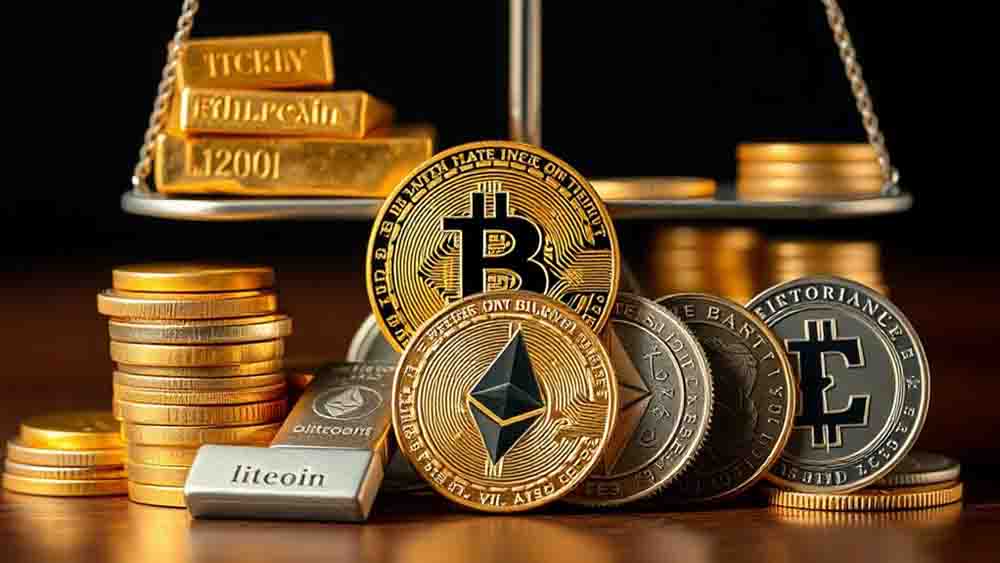
Conclusion
As you balance precious metals and cryptocurrencies, you're taking a smart approach to investment diversification. By allocating a portion of your portfolio to these assets, you're protecting against economic uncertainty while capitalizing on growth potential. Remember to regularly reassess your strategy. Rebalance as needed to maintain your desired allocation. Stay informed about market trends and adjust your approach accordingly. With careful planning and ongoing management, you'll be well-positioned to optimize your returns and minimize risk in this dynamic investment landscape.







